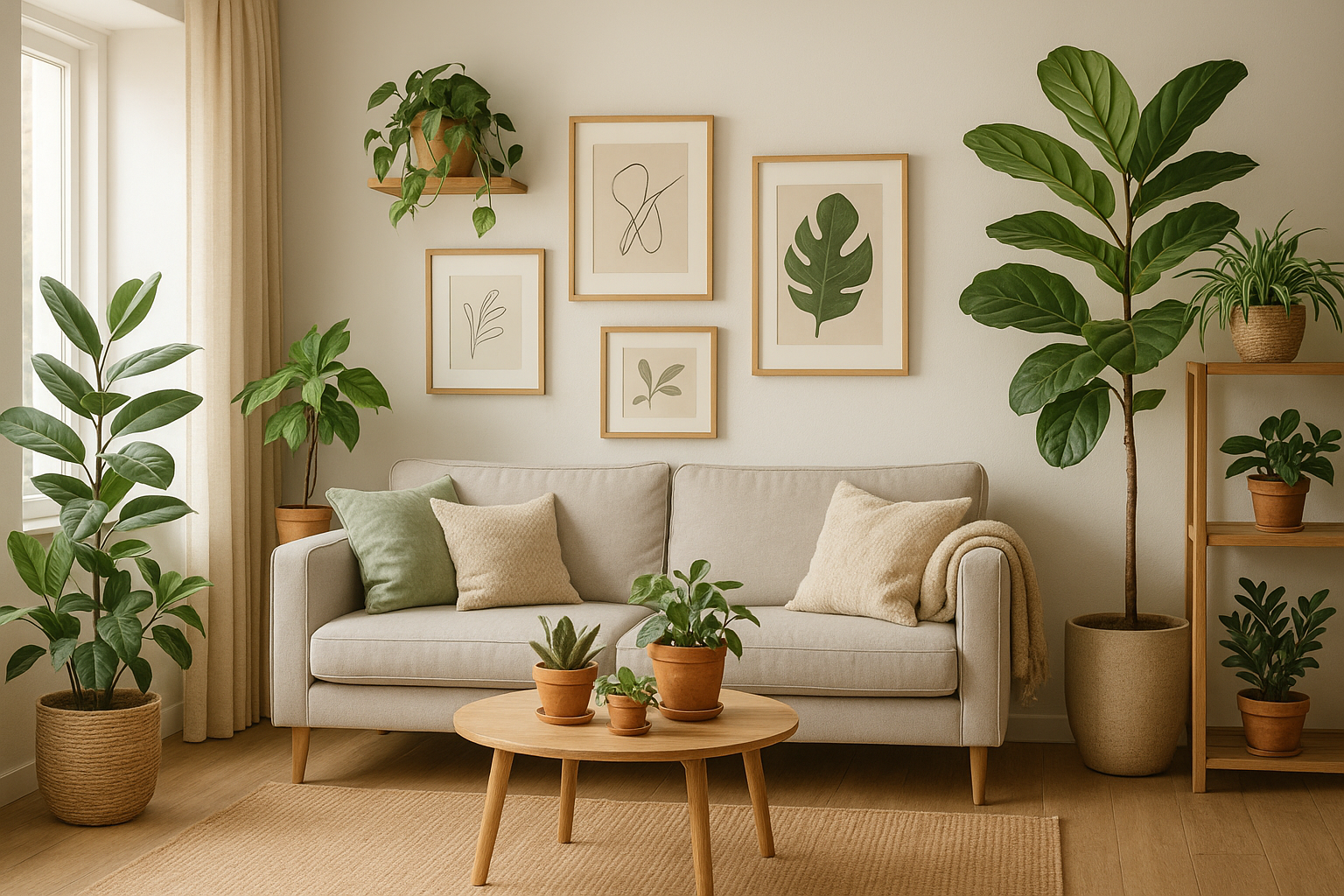In recent years, plants have evolved from simple home accessories to essential design elements. Bringing greenery indoors doesn’t just make a space more beautiful—it improves air quality, boosts mood, and adds life to your home. Whether you live in a small apartment or a large house, you can use plants to enhance your décor effortlessly.
Here’s a practical and inspiring guide on how to use plants in interior design, no matter your space or style.
Why Use Plants in Interior Design?
Before diving into tips, let’s understand the benefits of incorporating plants into your interior décor:
- Natural beauty: Plants add texture, color, and a calming aesthetic.
- Air purification: Many indoor plants help remove toxins from the air.
- Stress reduction: Greenery has a proven positive effect on mental health.
- Versatility: Plants fit with any design style—from minimalism to boho to modern.
Now let’s explore how to design with plants like a pro.
1. Start with Easy-to-Care-For Plants
If you’re just starting out, choose plants that don’t need a green thumb to thrive. Some great beginner-friendly options include:
- Snake Plant (Sansevieria): Extremely low maintenance and stylish.
- Pothos: Grows quickly and looks great in hanging pots or on shelves.
- ZZ Plant: Tolerates low light and irregular watering.
- Spider Plant: Great for bathrooms and kitchens, and produces baby plants.
Once you’re comfortable, you can explore more delicate species like ferns or calatheas.
2. Use Plants as Focal Points
Just like a piece of art or a stylish lamp, plants can serve as design anchors in a room.
- Place a tall plant like a fiddle-leaf fig in a corner.
- Use a large monstera in a decorative planter to draw attention.
- Add a small tree or an olive plant near a window for a Mediterranean touch.
Bold plants not only bring life to a space—they also create a visual “wow” factor.
3. Style Open Shelving with Greenery
Shelves can sometimes look too rigid or cluttered. Plants soften the lines and add visual movement.
- Place trailing plants like pothos or ivy on upper shelves so they cascade downward.
- Add small potted succulents between books and décor objects.
- Alternate plant textures and colors to keep things dynamic.
This is an especially effective way to liven up home offices, living rooms, or kitchens.
4. Mix and Match Planters
Don’t just rely on green leaves—your plant pots can add style too.
- Use a mix of ceramic, clay, woven, and metallic planters.
- Choose planters that reflect your design style (modern, rustic, eclectic, etc.).
- Use raised planters or stands for height variation and added dimension.
Think of planters as an extension of your color and texture palette.
5. Create a Green Wall or Vertical Garden
Short on floor space? Go up! Vertical gardens or plant walls are perfect for apartments or small rooms.
- Use wall-mounted shelves with trailing plants.
- Install a vertical pocket garden or modular plant panel.
- Try hanging planters from the ceiling near windows or corners.
This technique adds drama and function, turning a blank wall into a lush living feature.
6. Add Plants to Unexpected Places
Most people place plants in the living room or kitchen—but there are many overlooked spots where greenery thrives:
- Bathrooms: Many plants love the humidity. Try ferns or peace lilies.
- Bedrooms: A snake plant or lavender plant can improve sleep quality.
- Hallways or Entryways: A touch of green makes these transitional spaces feel alive.
Get creative and spread the green throughout your home.
7. Combine Plants with Other Natural Elements
To emphasize the natural vibe, combine plants with complementary materials.
- Use wooden shelves or furniture for a warm, earthy feel.
- Add stone or ceramic accessories for texture.
- Combine with natural fabrics like linen curtains or jute rugs.
This creates a soothing, organic atmosphere that feels curated and intentional.
8. Create a Plant Grouping
Instead of scattering your plants, consider grouping them together for visual impact.
- Use odd numbers (3 or 5) for the most pleasing arrangement.
- Vary heights and textures to create depth.
- Keep plants in similar tones or complementary colors.
Groupings work beautifully on coffee tables, windowsills, or in corners of the room.
9. Use Plants to Define Zones
In open floor plans, use plants to separate different living areas without using walls.
- A row of tall potted plants can subtly divide a living room and dining area.
- Hanging plants between two zones adds interest and a soft barrier.
- A shelf filled with greenery can act as a partition and display area.
This approach is functional, stylish, and adds life to multi-use spaces.
10. Refresh Seasonally
Just like you rotate textiles and decor with the seasons, you can do the same with plants.
- In spring and summer, display flowering plants or herbs.
- In fall, add deep green foliage and earthy pots.
- In winter, use evergreens or low-maintenance succulents.
Refreshing your plant setup seasonally keeps your interior feeling fresh and alive all year round.
Green Is the New Black
Plants have truly become a staple in modern interior design. They’re beautiful, versatile, and bring a natural elegance that few other design elements can match. Whether you’re adding just one potted plant to a shelf or creating a lush indoor garden, plants bring joy and calm into your home.
Don’t worry about having the perfect setup. Start small, experiment, and let your green space grow with you. Soon, you’ll wonder how you ever lived without plants in your design.
